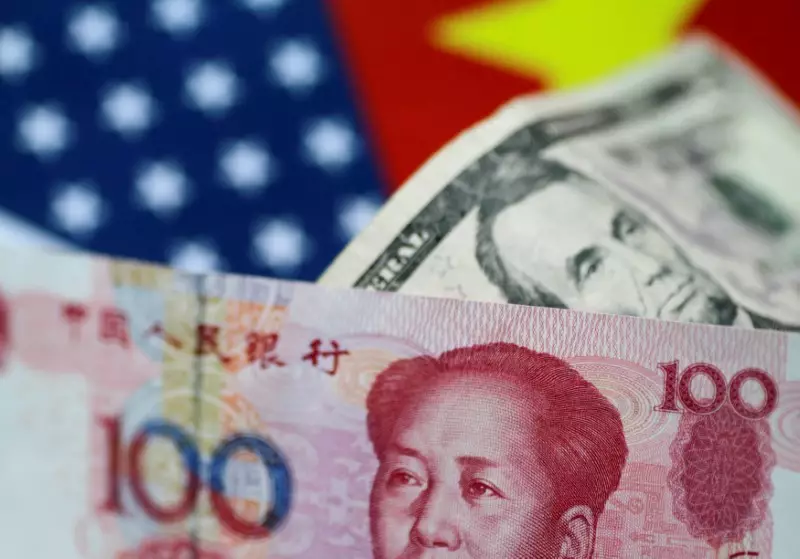Asian currencies faced significant downward pressure as the U.S. dollar strengthened in the lead-up to 2025, exacerbating the financial challenges for many economies in the region. This trend, steeped in both macroeconomic indicators and geopolitical tensions, is indicative of broader patterns that could redefine economic landscapes in Asia. The performance of the Chinese yuan, coupled with mixed signals from other regional currencies, illustrates a complex interplay of market forces that investors and policymakers must navigate.
Most currencies across Asia exhibited weakness, retreating further as the robust U.S. dollar continued to assert its dominance. Despite a marginal dip of 0.1% in the U.S. Dollar Index during Asian trading, it hovers closely near a two-year high—an indication of underlying strength in the dollar amidst a turbulent global economic climate. The financial markets are responding to the Federal Reserve’s interest rate outlook, which signals fewer cuts than previously anticipated, thereby elevating the dollar’s status as a safe haven.
Asian economies are experiencing the repercussions of this strong dollar, not only due to shifts in monetary policy but also due to lingering fears surrounding trade relations between the U.S. and China. The apprehension surrounding potential trade conflicts under the previous administration has led to diminished risk appetite among investors, further contributing to currency depreciation across Asian markets.
The Chinese yuan has experienced remarkable fluctuations, driven by recent data that indicate a slower than expected expansion in factory activity. As reported, China’s manufacturing sector has shown growth for a third consecutive month, buoyed by various stimulus measures. However, the growth figures fell short of market forecasts, prompting concerns about the sustainability of this recovery. The onshore yuan pair with the U.S. dollar, USD/CNY, exhibited a 0.2% increase on a particular Tuesday, illustrating the ongoing volatility.
Looking ahead, markets are eagerly awaiting further clarity on China’s fiscal policies and stimulus measures, amid speculation that the government may accelerate spending to bolster economic growth. Such developments are crucial not only for China but also for regional trading partners who are increasingly reliant on Chinese economic performance.
The variations among regional currencies paint a diverse picture. The Japanese yen saw a 0.3% decrease against the dollar following a temporary spike to a five-month high, signaling potential instability as it records a substantial yearly loss exceeding 10%. In contrast, the Singapore dollar remained stable, heading towards an annual rise—a rare silver lining in an otherwise bleak regional currency landscape.
The Australian dollar also faced slight declines, while the Indian rupee made marginal gains, indicating resilience with an over 3% increase for the year despite recent record lows against the dollar. The Thai baht and Indonesian rupiah showed minor strength, but these gains are not substantial enough to offset broader regional concerns.
Among Asian currencies, the South Korean won has encountered severe challenges, experiencing a nearly 6% decline against the dollar just in December. The recent political turmoil, including a court-approved arrest warrant for President Yoon Suk Yeol amidst a controversial martial law imposition, adds layers of uncertainty, further destabilizing the won and complicating the economic scenario.
As South Korea grapples with these internal challenges, the declines of the won reflect investor wariness amid political instability. The ongoing investigation into governmental actions by the Corruption Investigation Office amplifies these concerns, leading many to question the broader implications for economic policy in South Korea.
As we move toward 2025, the declines in Asian currencies against a backdrop of a solidifying dollar raise important questions about regional economic strategies. How these countries adapt their fiscal and monetary policies in response to these currency pressures will be critical in shaping the trajectory of their economies. Investors and policymakers must remain vigilant, understanding that geopolitical tensions, domestic policies, and external economic factors are inextricably linked in this dynamic financial landscape. The coming months will surely define the resilience of these currencies in the face of ongoing challenges.

